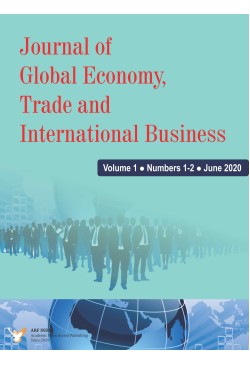
Journal of Global Economy, Trade and International Business
Frequency :Bi-Annual
ISSN :2583-0112
Peer Reviewed Journal
The Effect of FDI on Domestic Investment and Economic Growth in India: Vector Autoregression Estimation of the Causal Effects
Sensitivity of the Global Textile & Clothing Trade Post-MFA
The objective of this study is to examine the sensitivity of textile and clothing imports and exports with respect to changes in GDP and vice versa, and the impact of phasing-out of the Multi-Fiber Agreement (MFA) on these. The study used a modified form of the gravity model, analysed using the univariate Analysis of Covariance (ANCOVA) model, considering five years pre-MFA phase-out and seven years post-MFA. The results of the study indicate that textile and clothing imports and exports are sensitive to changes in GDP and vice versa, and that the primary impact of quota removal was on the exporters, resulting in an increase in the sensitivity of volume of textile and clothing exports with respect to GDP. This result should be examined in more detail, in terms of the factors affecting the sensitivity of textile and clothing exports at the country level.
Keywords: Multi-Fiber Agreement (MFA), textile and clothing industry, modified gravity model, sensitivity of imports and exports.
JEL Classification : L10, L60, and L67.
An Analysis of the Iranian Hospitality Industry Amidst Sars-Cov-2 (COVID-19) Pandemic
JEL classification code : Z3, L8, M3, I1
Hamira Zamani-Farahani, Rehana Parvin & Emily Pauline Yeager (2023). An Analysis of the Iranian Hospitality Industry Amidst Sars-Cov-2 (COVID-19) Pandemic. Journal of Global Economy, Trade and International Business. 3(1), 41-70. https://
DOI:10.47509/
JGETIB.2023.v03i01.03
A New International Capital Asset Pricing Model